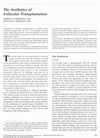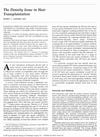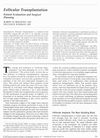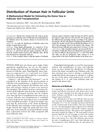TLDR Bobby Limmer was crucial in developing a hair transplant method that uses natural hair groupings for a more realistic look.
In 1998, Emanuel Marritt highlighted Bobby Limmer's pivotal role in developing follicular unit transplantation for hair replacement, a technique that involves dissecting hair into natural groupings called "follicular units" using a microscope and transplanting these units to create a more natural appearance. Despite the lack of acknowledgment from others in the field, Marritt credits Limmer with the fundamental change in hair transplantation practices since 1988. Limmer's approach was based on five key principles, including the recognition of follicular units as essential building blocks and the careful handling of these delicate grafts. The document also acknowledges Bill Rassman's contributions, particularly in large graft sessions and temporal hairline advancement, but emphasizes that the core concept originated with Limmer. Additionally, the document by Dr. Bernstein discusses the importance of maintaining the integrity of follicular units during transplantation, notes racial differences in hair density, and addresses the controversy over the recognition of Limmer's work. The conclusion affirms the significance of follicular unit transplantation in hair restoration and acknowledges past errors in the field.
 67 citations
,
September 1997 in “Dermatologic Surgery”
67 citations
,
September 1997 in “Dermatologic Surgery” The document concludes that good cosmetic outcomes in hair transplantation depend on the surgeon's artistic skill and careful planning.
 32 citations
,
September 1997 in “Dermatologic Surgery”
32 citations
,
September 1997 in “Dermatologic Surgery” Mini-micrografting in hair transplants can give similar density to older methods with fewer sessions.
 72 citations
,
September 1997 in “Dermatologic Surgery”
72 citations
,
September 1997 in “Dermatologic Surgery” Careful planning and patient counseling can lead to excellent hair transplant results, often in one or two sessions.
172 citations
,
December 1994 in “The Journal of Dermatologic Surgery and Oncology” This hair transplant method improves cosmetic results for hair loss.
 7 citations
,
October 2011 in “International Surgery”
7 citations
,
October 2011 in “International Surgery” In 2011, hair restoration was a specialized field in plastic surgery, using techniques like "Ultrarefined follicular unit hair transplantation" to minimize scarring and promote hair growth, with future treatments like stem cell therapy and hair cloning still being tested.
 15 citations
,
December 2007 in “Dermatologic Therapy”
15 citations
,
December 2007 in “Dermatologic Therapy” Hair transplantation has improved with techniques that increase graft survival and patient satisfaction for more natural results.

Modern hair restoration techniques can effectively treat hair loss and provide natural-looking results.
 1 citations
,
March 2023 in “International Journal of Trichology”
1 citations
,
March 2023 in “International Journal of Trichology” Platelet-rich plasma didn't increase hair length but may help keep hair follicles alive.
 83 citations
,
April 1999 in “Dermatologic Surgery”
83 citations
,
April 1999 in “Dermatologic Surgery” The research found that for a typical hair density, about 11 square centimeters of donor scalp is needed to get 800 hair grafts for transplantation.








